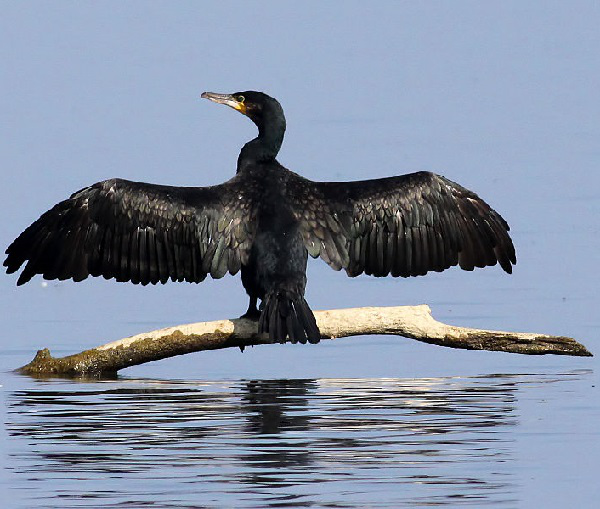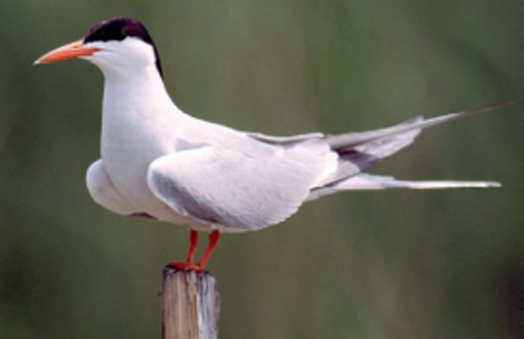
THE CORMORANTS – IL CORMORANO
It is all black with a short yellow beak.
It is black in order to dry very fast when it is wet.
In fact it eats fresh fish and it fishes under water.
It eats a lot, about the same quantity as its weight: if a cormorant weights a kilo, it can eat a kilo of fresh fish.
This is why it is considered a dangerous bird from fishermen.
Il cormorano è nero con il becco giallo. E’ nero per potersi asciugare velocemente, attirando i raggi del sole, quando è bagnato. Infatti mangia pesce fresco e pesca sott’acqua.
Mangia moltissimo: circa la stessa quantità del suo peso: se un cormorano pesa un kilo, mangerà un kilo di pesce.
Per questo è considerato dai pescatori un uccello pericoloso.

TERNS – LE STERNE
The terns live in Europe, Asia, Africa and America. They have got white bodies and greyish wings. They have got a black head, like a “hood”, clearly visible in winter. Their feet are red and small and their beaks are also red with a black tip.
They are similar to swallows because they have got forked tails and a very wide wingspan.
They live in group, on the sand, in the dunes, in lagoons or wetlands, near rivers or lakes, because they feed on small fish, insects, mollusks, crabs..
Le sterne vivono in Europa, Asia, Africa e America.
Hanno il corpo bianco e le ali grigiastre. Hanno la testa nera, come se avessero un cappuccio, chiaramente visibile in inverno. Le zampe sono piccole e rosse e anche il becco è rosso con un puntino nero.
Sono simili alle rondini perché hanno la coda biforcuta e un’ampia apertura alare.
There are different kinds of terns:
Ci sono diversi tipi di sterna
COMMON TERN
La sterna comune
LITTLE TERN
With a yellow beak with a black tip and a white bezel on its front
Il fraticello con un becco giallo con un puntino nero e una mezza luna bianca sulla fronte
TERN OF RUPPEL
Whit a sort of tuft
La sterna di Ruppel con una specie di ciuffo
